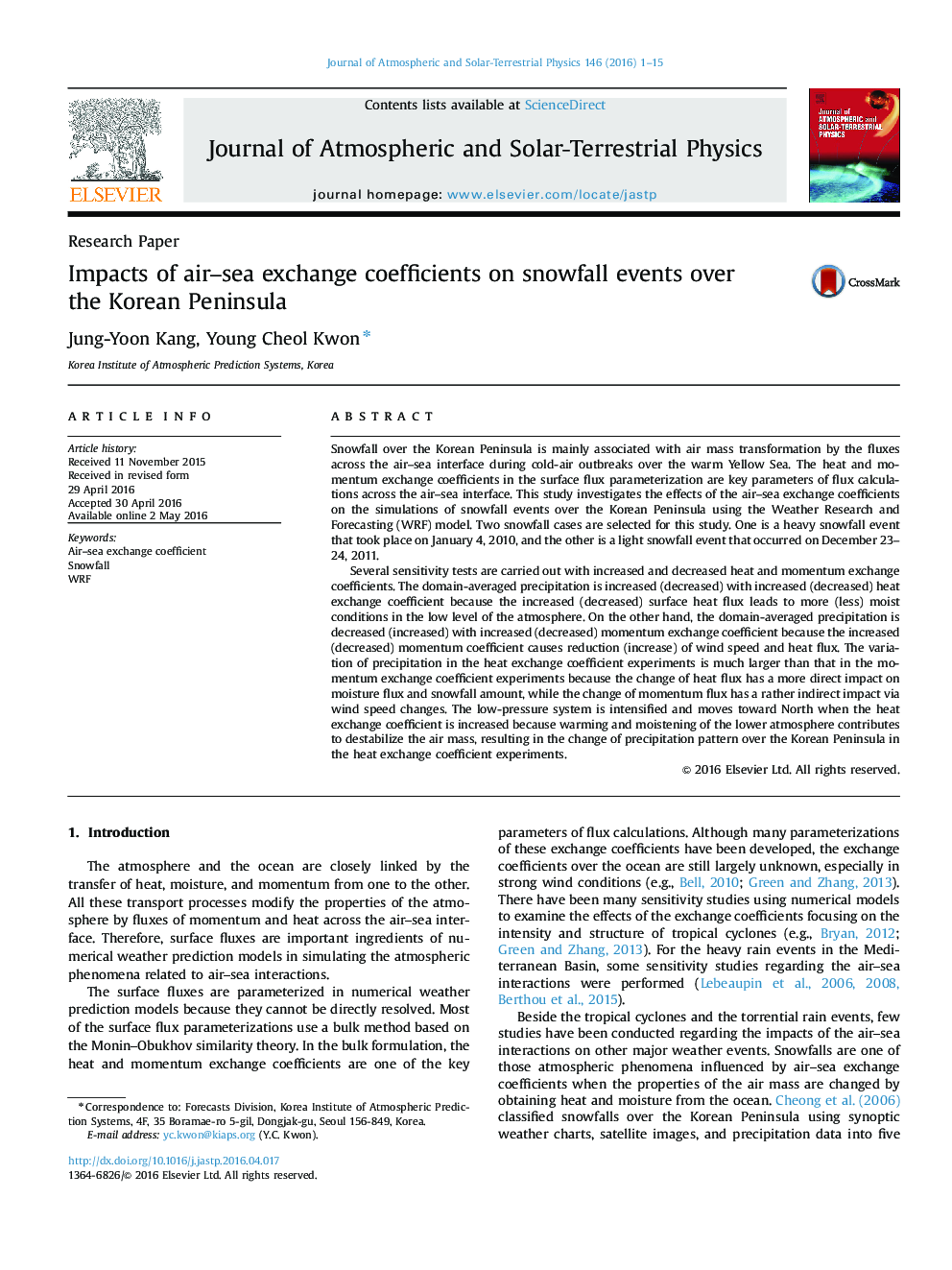| Article ID | Journal | Published Year | Pages | File Type |
|---|---|---|---|---|
| 1776190 | Journal of Atmospheric and Solar-Terrestrial Physics | 2016 | 15 Pages |
Abstract
Several sensitivity tests are carried out with increased and decreased heat and momentum exchange coefficients. The domain-averaged precipitation is increased (decreased) with increased (decreased) heat exchange coefficient because the increased (decreased) surface heat flux leads to more (less) moist conditions in the low level of the atmosphere. On the other hand, the domain-averaged precipitation is decreased (increased) with increased (decreased) momentum exchange coefficient because the increased (decreased) momentum coefficient causes reduction (increase) of wind speed and heat flux. The variation of precipitation in the heat exchange coefficient experiments is much larger than that in the momentum exchange coefficient experiments because the change of heat flux has a more direct impact on moisture flux and snowfall amount, while the change of momentum flux has a rather indirect impact via wind speed changes. The low-pressure system is intensified and moves toward North when the heat exchange coefficient is increased because warming and moistening of the lower atmosphere contributes to destabilize the air mass, resulting in the change of precipitation pattern over the Korean Peninsula in the heat exchange coefficient experiments.
Related Topics
Physical Sciences and Engineering
Earth and Planetary Sciences
Geophysics
Authors
Jung-Yoon Kang, Young Cheol Kwon,
